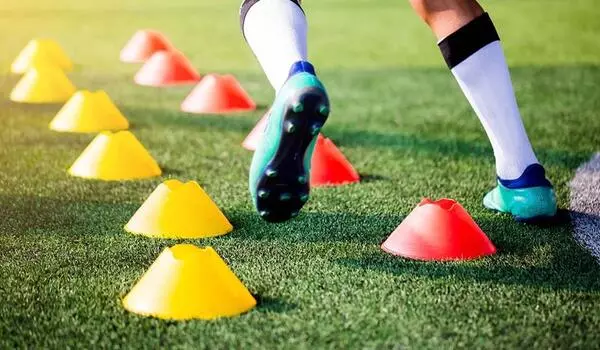Aerobic fitness is critical to elite soccer players’ performance, and different player positions frequently necessitate varying levels of aerobic capacity. Researchers have discovered a link between elite soccer players’ fitness and the positions they play. According to a recent study, the ability to make this assessment can help coaches regulate individual training loads based on player position.
Researchers have discovered a link between elite soccer players’ fitness and the positions they play. According to a recent study, the ability to make this assessment can help coaches regulate individual training loads based on player position. Except for center backs, all positions on a soccer field showed a strong association between aerobic power training and high-intensity performance, according to the study.
“It’s perhaps not surprising because centre backs cover less distance and perform fewer power events than other field positions,” said Matteo Masucci, a Ph.D. candidate in Kinesiology and Health Sciences at the University of Waterloo. “Centre backs control the situation by facing the pitch.” They play at a slower pace and rely more on mental or tactical skills. Midfielders must analyze everything in front of them and behind them and react in both directions. Strikers must exert maximum effort in order to fire a shot at the right time.”
When paired with videos of on-field performance, our analysis revealed that the link between aerobic fitness and repeated high-intensity sequences in a game varied depending on the position a soccer competitor played.
Matteo Masucci
Researchers examined data from 62 Italian Serie A soccer players collected over a full season between 2014-15 and 2018-19 to see if targeted treadmill training and lactate blood samples taken from the players’ earlobes accurately assessed aerobic fitness – the total amount of energy required to perform a high-power event such as acceleration or deceleration.
“When paired with videos of on-field performance, our analysis revealed that the link between aerobic fitness and repeated high-intensity sequences in a game varied depending on the position a soccer competitor played,” Masucci, a soccer coach, said.
While all soccer players benefit from good aerobic fitness, the demands can vary based on player positions. Midfielders, fullbacks, and wingers often require higher levels of cardiovascular endurance due to the distances they cover and their involvement in both attacking and defensive phases.

It was discovered that an elite soccer player can make up to 1,400 activity changes and up to 200 short multidirectional high-intensity efforts during a 90-minute game, necessitating physical conditioning not only in terms of speed but also in movement pattern changes.
Previous research has only looked at the relationship between aerobic fitness and soccer speed. Masucci believes that studying high-power events that are not related to speed is important because of the acceleration and deceleration that elite soccer players must expend, as well as the time it takes to recover from high-intensity sequences.
“These findings mean that coaches can use lactate blood samples and incremental treadmill assessments to provide valuable information about soccer players,” Masucci said. “Players who have a high metabolic power distance cut-off equal to or higher than 1,450 m for center-backs, 1,990 m for full-backs, 2,170 m for midfielders, and 1,670 m for forwards could be considered as having superior aerobic fitness. Therefore, when planning training and game strategy, coaches should consider these individual differences in physiological and physical performance.”
















